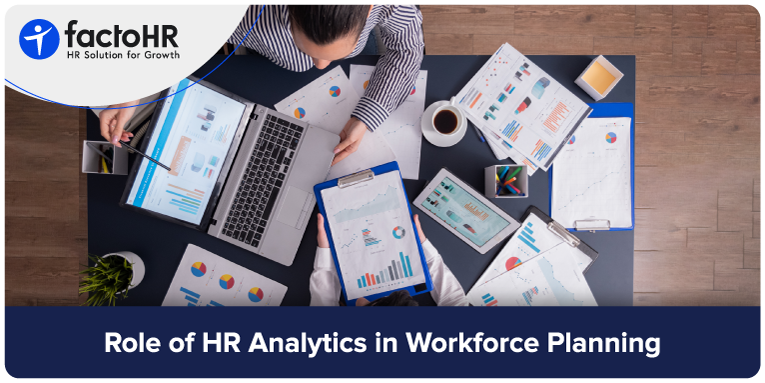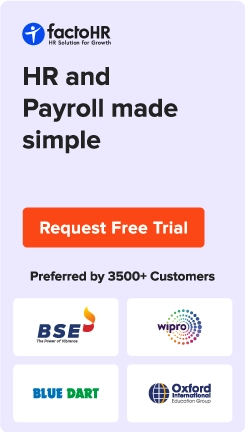What is the Importance of HR Analytics in Workforce Planning

Table of Contents
Introduction
Most, if not all, organizations face some common issues related to employee engagement, talent acquisition, employee retention, and resource allocation while implementing workforce planning strategies. Your organization could be one of them as well. So, it is understandable when you want solutions to these perennial issues.
Popular firms like Unilever, Microsoft, and IBM rely on HR analytics to solve such issues. Unilever implements data-backed strategies to engage and retain employees. Microsoft identifies performance gaps by assessing various performance metrics. Similarly, IBM relies on machine learning algorithms to improve productivity and reduce recruitment costs.
All these examples highlight the importance of HR analytics in workforce planning.
So, what is HR analytics? And what is the role of HR analytics in workforce planning?
HR analytics is the process of gathering, measuring, and analyzing key HR metrics such as turnover rates, retention rates, and revenue per employee.
This blog underscores the importance of HR analytics in workforce planning and provides an in-depth explanation of how analytics can be used for strategic workforce planning.

What is HR Analytics in Workforce Planning?
HR analytics in workforce planning refers to using HR and workforce metrics to plan for workforce demands. For example, predictive HR analytics (a type of HR analytics) can help predict hiring needs by analyzing current data related to vacant positions in various departments. Workforce analytics can also help anticipate future talent needs by identifying skill gaps and current trends. You can also measure other key metrics, such as workforce growth rate. Thus, workforce analytics is important in aligning HR and business strategies.
How does HR Analytics Work for Workforce Planning?
Workforce analytics can improve various HRMS processes, such as employee engagement, talent acquisition, and performance appraisal. Let’s learn how HR analytics improves workforce planning in some detail.
Optimizing Talent Acquisition
HR managers can improve talent acquisition processes by incorporating predictive analytics. For example, they can identify potential candidates by analyzing candidate profiles. Predictive analytics can then predict the chances that a candidate would be an ideal fit for the given role.
Identifying Skill Gaps
Leaders can also combine diagnostic and prescriptive analytics to identify and address skill gaps. Diagnostic analytics identifies potential causes for skill deficiencies, whereas prescriptive analytics recommends subsequent actions and aids in crafting learning programs.
Predictive Analytics in HR
Predictive analysis of factors such as delayed retirement rates can assist in estimating future retirement rates. Similarly, measuring an employee’s KPIs would aid in identifying potential leaders. Executives can also prevent issues related to attrition by assessing existing data related to turnover rates.
Improving Employee Retention
Organizations can improve their employee retention strategies by analyzing data related to employee recognition. If a lack of skill development opportunities is one reason behind employee turnover, they can also develop personalized training programs. Unilever implemented mood analysis to understand employee sentiment and improve employee retention.
Forecasting Workforce Needs
Workforce analytics can help prevent issues related to hiring and inventory planning. It forecasts future hiring needs by accessing data such as employee turnover and retirement rates. Analytics also make inventory planning easier by comparing available inventory with estimated requirements.

What is the Importance of HR Analytics in Building a Workforce Strategy?
Workforce analytics are critical for several aspects of workforce strategy and planning. They help in identifying employees for top positions by analysing their mobility rate. They can also assist you in preparing a future-ready workforce by comparing the current competencies of your workforce with the required competencies. A comprehensive analysis of past customer ratings and feedback would also help improve customer satisfaction.
Benefits of Integrating HR Analytics in Workforce Planning
Integrating human resource analytics with workforce planning could differentiate between an organization’s failure and success. Workforce analytics can help in the proper allocation of resources and reduce the cost related to recruitment and turnover.
Better Resource Allocation
HR professionals can improve recruitment management by finding the most effective recruitment channels. Managers can also anticipate future needs and stock up on inventory accordingly.
Cost Control
Leaders can optimize finances by measuring various data, such as cost-per-hire, quality-per-hire, and revenue per employee.
Reduced Turnover
HR departments can use two types of data to reduce employee turnover. They can gather traditional data by conducting surveys and collecting feedback. They can also use a more modern approach and analyze employee sentiments and participation metrics.
Agility in Workforce Deployment
People analytics can aid in workforce planning by analysing the quality and quantity of your workforce. Analyzing workforce quality includes current competencies and future requirements. It requires a thorough evaluation of new hires and employee promotion metrics.
ROI From Proactive Planning
All the above benefits contribute to significant returns on investment. For example, retaining and engaging employees would save recruitment-related costs and improve productivity.
Conclusion
In times of unforeseen technological advancements, uncertainty, and relentless competition, HR analytics becomes even more important in decision-making. As mentioned earlier, businesses rely on data and analytics to make decisions. Relying solely on intuition-based decisions is not advisable.
HR analytics could significantly improve your decision-making process by providing in-depth analysis of metrics such as voluntary and involuntary turnover rates, revenue per employee, and performance reviews and ratings. factoHR allows access to key HR metrics related to demographics, departmental insights, offer acceptance rate, and time-to-fill, among others. Access to such metrics would optimize your workforce management processes.
Grow your business with factoHR today
Focus on the significant decision-making tasks, transfer all your common repetitive HR tasks to factoHR and see the things falling into their place.

© 2025 Copyright factoHR


